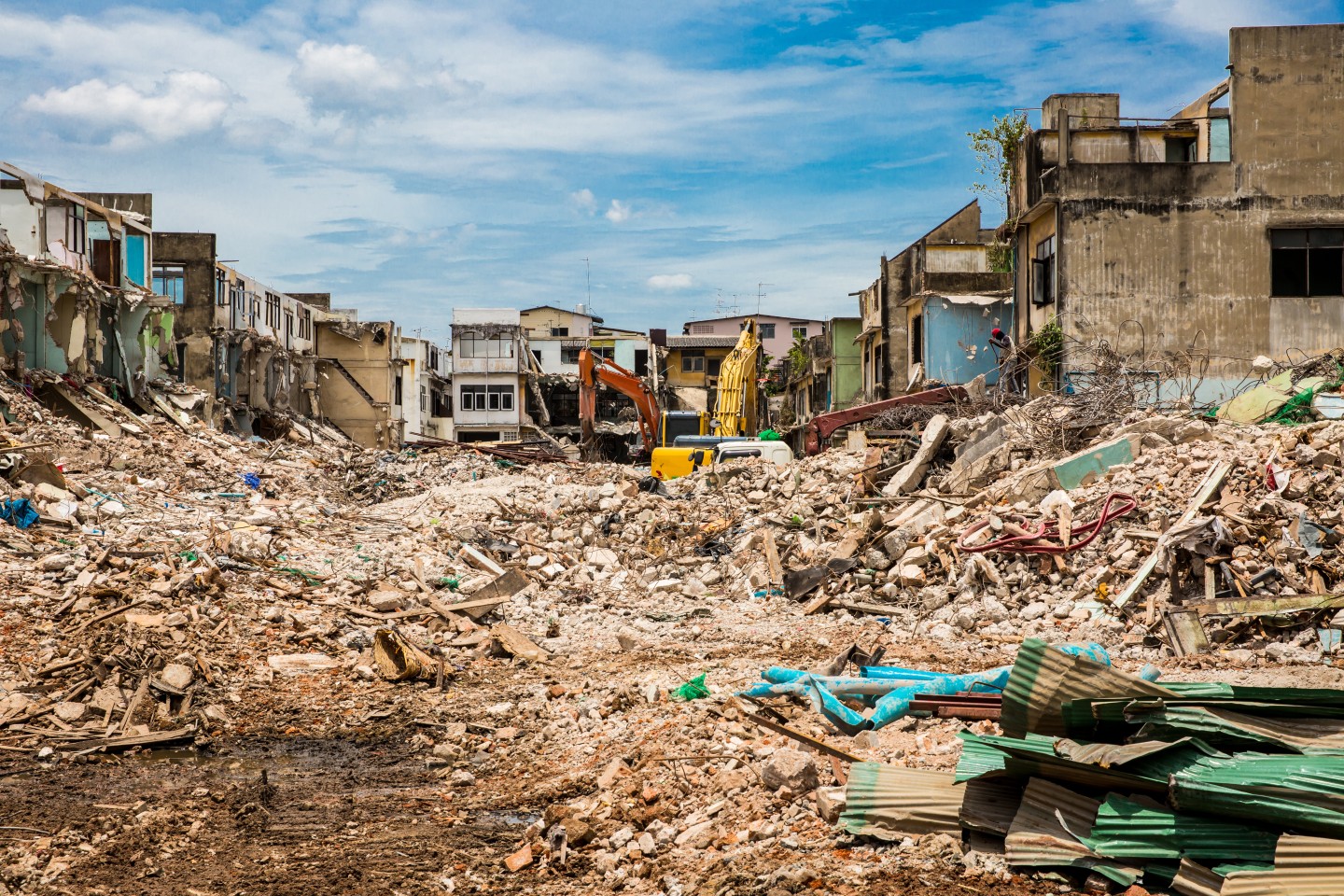
Heavy Rain, Flooding, and Chance of Severe Weather Staring Down the Southern U.S.
January 22, 2024
Posted: October 5, 2023 2:13 pm





From an earthquake in Nepal to mass flooding in India to a typhoon headed toward China and Taiwan, there have been a number of severe weather events in Asia this week. Here is a look at what this part of the globe has been dealing with over the last few days.
Typhoon Koinu Taking Aim at Parts of Taiwan and Southeastern China
Typhoon Koinu is increasing in intensity as it moves over the Philippine Sea on its way to the southern edge of Taiwan and southeastern China. The storm is expected to impact the region with heavy rain and damaging winds. As of late Wednesday, Koinu was swirling just off the southern coast of Taiwan packing maximum sustained winds of 103 mph, putting it at the equivalent of a Category 2 hurricane as defined by the Saffir-Simpson Hurricane Wind Scale.
Taiwan’s Central Weather Administration has issued sea and land typhoon warnings as the storm inches closer. Beaches in the popular Kenting National Park were closed in preparation of the storm’s arrival. Tropical cyclone warnings are also in place for the northern provinces of the Luzon region by the Philippine Atmospheric, Geophysical, and Astronomical Services Administration.
Wednesday was a day of preparation for this region of Taiwan with schools and businesses closed in anticipation of landfall. Several flights were also cancelled, disrupting travel in this part of Asia.
Koinu came to life on September 27 near the Northern Mariana Islands and Guam. It took about two days for this zone of low pressure to turn into a tropical depression as it moved across the central Philippine Sea. The feature strengthened into a tropical storm on Saturday and hit the status of a Category 1 hurricane on Sunday. Koinu then went through the process of rapid intensification on Sunday into Monday, becoming a Category 3 storm as it moved to the west.
The typhoon is predicted to lose wind intensity as it moves closer to Taiwan and China. Taiwan recently saw its first storm landfall in four years when Typhoon Haikui moved onshore in early September.
The current forecast models indicate that Koinu will move to the northwest in the coming days, tracking over or near Taiwan’s Hengchun Peninsula into Thursday morning local time. The northern Luzon region of Philippines as well as western and northern Taiwan and southeastern China should expect widespread rain of 1 – 2 inches. Heavier amounts of 2 – 4 inches will fall in portions of eastern Taiwan and the coastline of southeastern China.
A maximum rainfall total of 8 – 12 inches is possible in the far southeastern corner of Taiwan. This magnitude of rain will increase the risk of mudslides, flash flooding, and damage to buildings and roads.
Forecasters are warning that wind speeds of 40 to 60 mph will hit northern Taiwan, the northern tier of the Philippines, and southeastern China. Higher gusts up to 80 mph are a possibility in the southern and eastern portions of Taiwan. The highest winds will happen near the center of the storm when it moves onshore in southeastern Taiwan.
The heavy rain bands and winds associated with Koinu could hit as far as Hong Kong by Friday and into the weekend as the storm moves in a westerly direction.
The Philippine Sea is predicted to remain a fertile ground for new tropical weather development heading into next week. This means that this part of Asia should remain vigilant about the potential of new features popping up. This is the tail end of the annual West Pacific Typhoon season.
Deadly Flash Flooding in Northeast India
At least five people are dead after flooding overtook the northern part of India’s Sikkim state. In addition, 23 Indian Army personnel are still missing as search crews continue to look for the troops. The flooding was triggered by a cloudburst over Lhonak Lake that led to rising waters in the Teesta River.
The water in the river rose dramatically in a short amount of time, increasing by 15 to 20 feet over normal. The flooding led to the submersion of over 40 Army vehicles. The collapse of three bridges is also being blamed on the flooding. Approximately 420 people have been transported to relief camps.
While flooding is not an atypical weather concern in this part of the Himalayas, this event was more destructive than usual.
Pair of Earthquakes Rattle Nepal
A pair of earthquakes rattled the northwestern corner of Nepal on Thursday, injuring at least 17 people. The two quakes triggered a landslide that also damaged several homes in the Bajhang District of Nepal, located near the border of India.
According to Bajhang Police Chief Bharat Bahadur Shah, one woman is still missing in the district. Nepal’s National Earthquake Monitoring & Research Center confirmed that one earthquake had a magnitude of 5.3 while the other one came in at a magnitude of 6.3. The two quakes hit about 30 minutes apart during the afternoon hours.
The shaking from the duo of earthquakes was felt as far as New Delhi, sending people fleeing from tall buildings. Tuesday’s earthquakes brought back bad memories of an April 2015 trembler that killed about 9,000 people while injuring thousands others. That quake hit a magnitude of 7.8, rattling for about 20 seconds and triggering significant damage in and around Kathmandu.
Did you find this content useful? Feel free to bookmark or to post to your timeline for reference later.

January 21, 2024

January 19, 2024

January 18, 2024